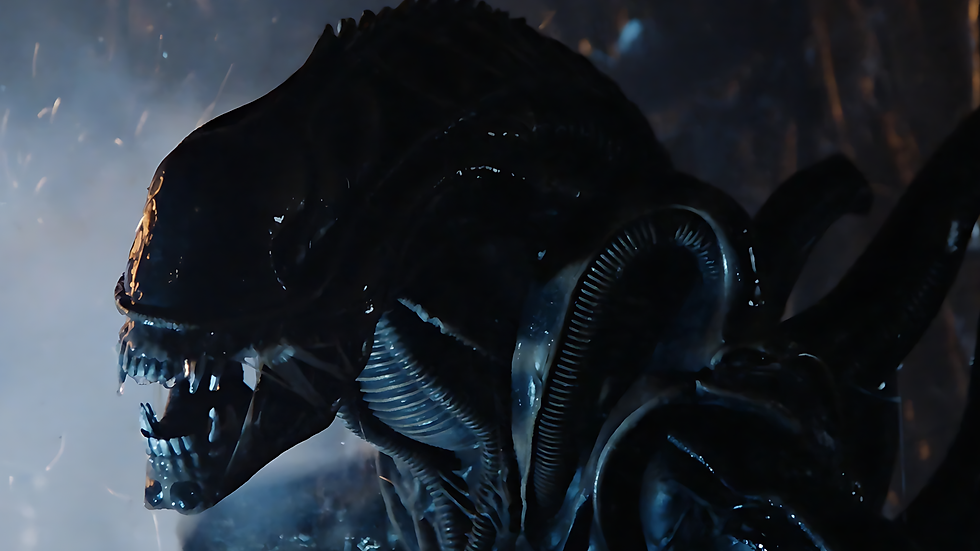The Antagonists of THE WIZARD OF OZ: An Analysis
- Joseph Morganti

- Nov 18, 2024
- 3 min read
The Wizard of Oz has remained a classic for nearly 100 years since the film came out in 1939. While there's so much to be said about the film, the antagonists highlight how writers can develop iconic characters to serve the story in many ways. Let's dive into these antagonists and what we can learn as writers.

Still from 'The Wizard of Oz' (1939). Photo credit: IMDb
The Wicked Witch of the West
The Wicked Witch of the West is the primary antagonist in the 1939 Metro-Goldwyn-Mayer musical The Wizard of Oz. An evil and power-hungry witch, she seeks to steal Dorothy Gale's ruby slippers, hoping to harness their magic to seize control of Oz. As the nemesis of Dorothy, the Tin Man, the Scarecrow, and the Cowardly Lion, she stands as a formidable threat to their quest.
Background
The Wicked Witch of the West is the despotic ruler of Winkie Country, located in the western part of the magical land of Oz. She mirrors Oz's version of Miss Almira Gulch, Dorothy Gale's cantankerous neighbor.
When a tornado transports Dorothy's farmhouse to Oz, it lands on the Wicked Witch of the East, the cruel ruler of Munchkinland in the eastern part of Oz. After Glinda, the Good Witch of the North, greets Dorothy and the Munchkins to celebrate the death of the Witch of the East, the Wicked Witch of the West appears in a cloud of smoke, demanding to know who killed her sister.
In her attempt to seize the ruby slippers once owned by the Witch of the East, the shoes vanish, reappearing on Dorothy's feet. Swearing revenge, the Wicked Witch of the West vanishes in flames.
She then relentlessly pursues Dorothy and her companions—the Scarecrow, the Tin Man, and the Cowardly Lion—as they journey to the Wizard of Oz, each seeking something to fulfill their deepest desires: a way home, a brain, a heart, and courage.
Primary Antagonists
If you aim for a character-driven fantasy story, you'll need a primary antagonist like The Wizard Of Oz. The heart of your story will come from the characters' changes, challenges, and experiences. This means you'll want a villain as evil as possible to truly push your protagonist.
In reality, you can make almost any villain feel threatened. Give them something your main character can't do, and they immediately become a formidable threat. Make them more intelligent, ruthless, or powerful— physically, socially, or financially—and you'll have a villain that feels dangerous.
Flying Monkeys and Niko
The Flying Monkeys are a mystical species of monkeys with feathered bird wings. They serve as the primary soldiers of the Wicked Witch of the West and act as secondary antagonists in the 1939 film The Wizard of Oz.
Their mission is to capture Dorothy and her dog, Toto. Led by Nikko, they fly out of the Wicked Witch's castle to carry out her orders. In their pursuit, they violently dismember the Scarecrow, tearing off his legs and ripping apart his chest, and they also seize the Tin Man's axe. Though they frequently take to the skies, the Flying Monkeys and the Winkie Guards undergo a change after the Wicked Witch's defeat, eventually becoming reformed and no longer serving her.
Secondary Antagonists
For general advice, your second antagonist should serve as the final hurdle before your protagonist is ready to confront the main antagonist. This character can possess crucial knowledge or a secret, enabling your heroes to overcome the real threat.
You can also show that the second antagonist is less dangerous through your characters' reactions and conversations. For instance, you could create a scenario where your characters must choose between striking at either antagonist but not both.
They might attack the secondary antagonist, assuming it's a more straightforward victory, allowing them to focus on the bigger challenge ahead. This choice will help emphasize the main antagonist's actual danger–if your characters are more terrified of them, that fear will naturally be conveyed to the reader.
Winkie Guards
The Winkie Guards are the Wicked Witch of the West’s loyal foot soldiers in The Wizard of Oz. Known for their distinctive marching chant, which includes phrases like, “Oh-Ee-Yah! Ee-Oh-Ah!” (or variations such as “All we own, we owe her!” or “Oh, we love the old one!”), the guards are primarily stationed to protect the grounds of the Witch’s castle.
When Dorothy and her friends arrive to rescue her, they steal three Winkie uniforms and sneak into the castle. After the Witch's death, the Winkies are no longer hostile, and they express gratitude to Dorothy for freeing them from the Witch's tyranny.
This suggests that they were not inherently evil but slaves to the Witch, much like the Munchkins were to her sister, the Wicked Witch of the East. The Winkies' actions were driven by fear and coercion, as they had no choice but to obey their cruel mistress.



